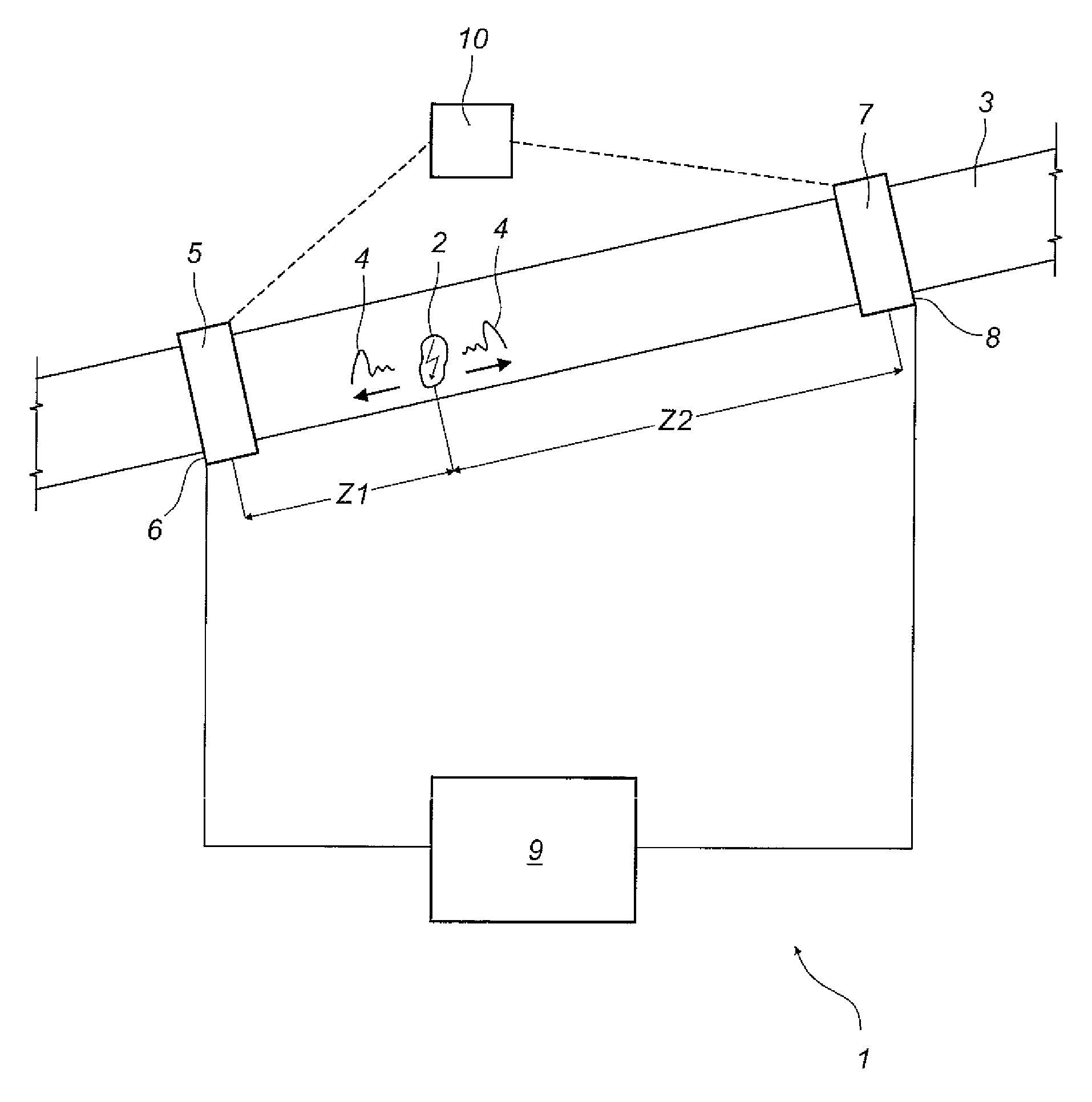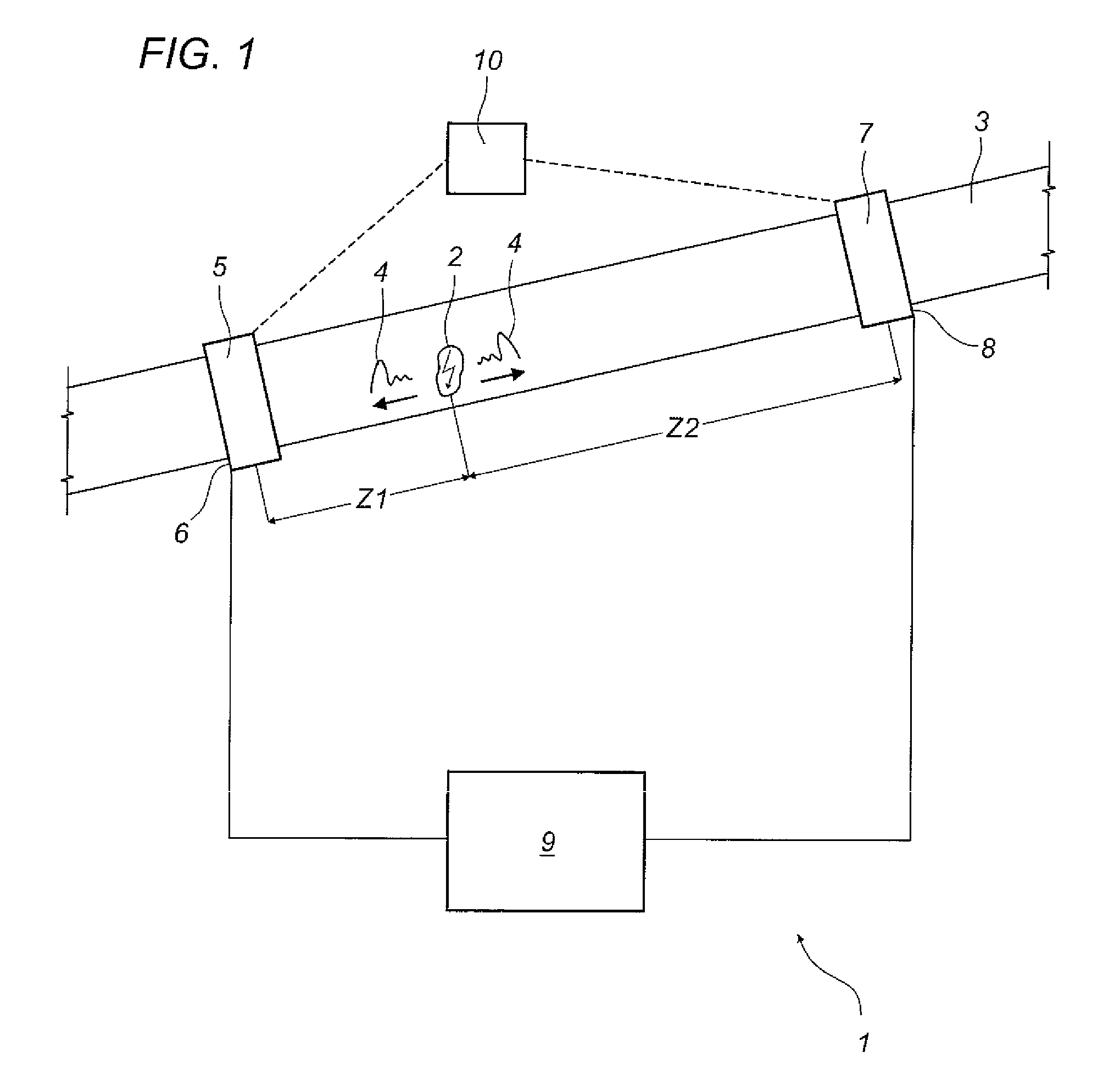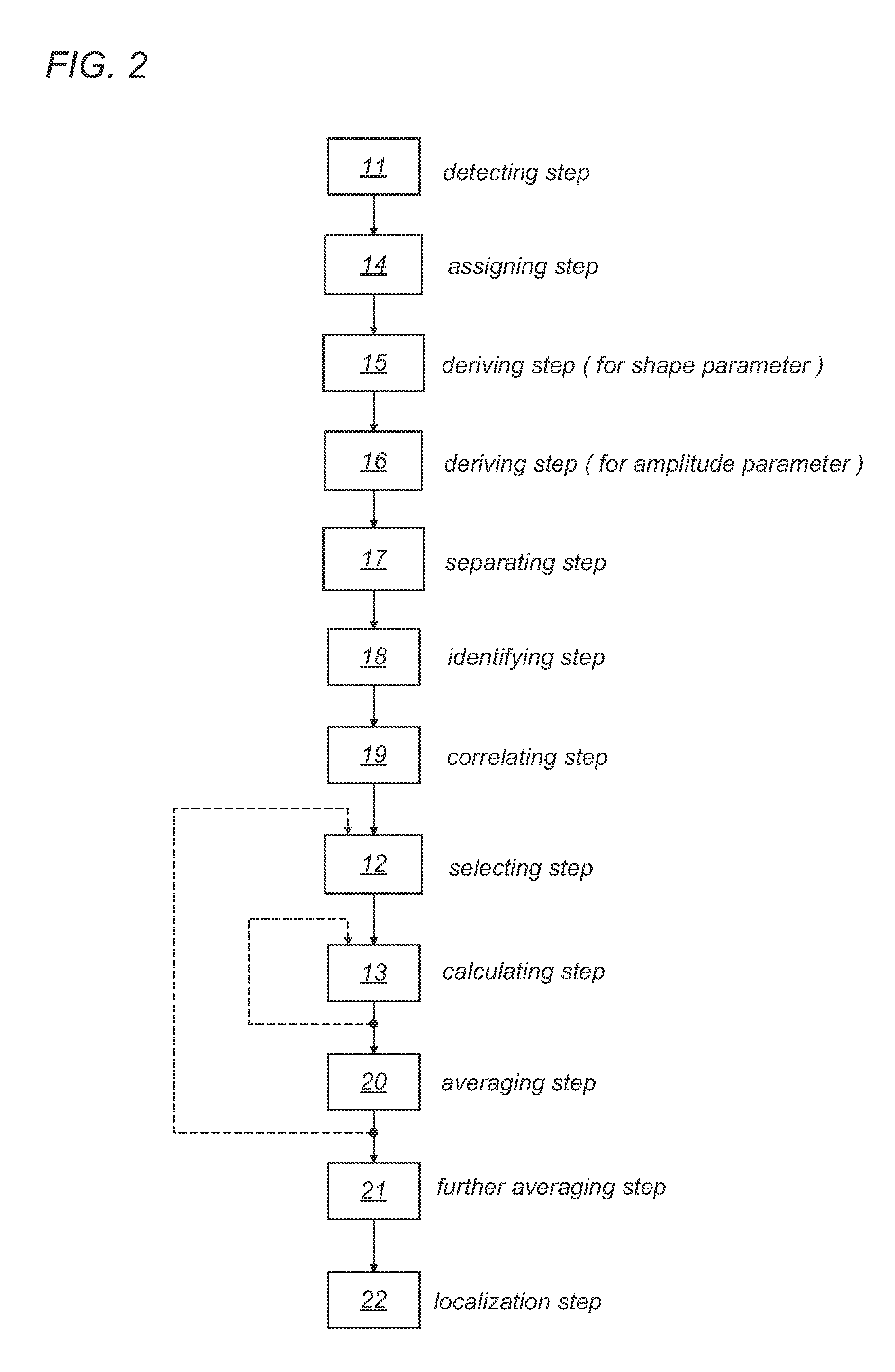Device and method for locating partial discharges
a technology of partial discharge and device, applied in the direction of fault location, testing circuit, instruments, etc., can solve the problems of not being able to detect, the method is not very reliable for long cables, and the partial discharge is substantially limited, so as to achieve reliable and robust results
- Summary
- Abstract
- Description
- Claims
- Application Information
AI Technical Summary
Benefits of technology
Problems solved by technology
Method used
Image
Examples
Embodiment Construction
[0052]The numeral 1 in FIG. 1 denotes a device according to this invention.
[0053]The device 1 is a device used for locating partial discharges occurring at a discharge site 2 in an electric apparatus 3 with elongate geometry and generating corresponding electric pulses 4 propagating in opposite directions axially along the apparatus 3 from the discharge site 2.
[0054]The device 1 for locating partial discharge sites is applicable, for example, on medium and high voltage cables, autotransformers or GILs.
[0055]The device 1 comprises a first sensor 5 which can connect to the apparatus 3 (for example to the cable) at a first detecting station 6.
[0056]The device 1 also comprises a second sensor 7 which can connect to the apparatus 3 at a second detecting station 8.
[0057]The sensors 5 and 7 are configured to detect analog electric signals representative of the waveform of the discharge pulses 4.
[0058]The sensors 5, 7 consist, for example, of magnetic probes, inductive or capacitive probes,...
PUM
 Login to View More
Login to View More Abstract
Description
Claims
Application Information
 Login to View More
Login to View More - R&D
- Intellectual Property
- Life Sciences
- Materials
- Tech Scout
- Unparalleled Data Quality
- Higher Quality Content
- 60% Fewer Hallucinations
Browse by: Latest US Patents, China's latest patents, Technical Efficacy Thesaurus, Application Domain, Technology Topic, Popular Technical Reports.
© 2025 PatSnap. All rights reserved.Legal|Privacy policy|Modern Slavery Act Transparency Statement|Sitemap|About US| Contact US: help@patsnap.com



